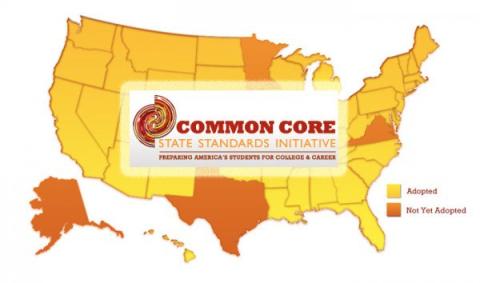The Common Core State Standards Initiative (CCSI) came about in 2009 when the National Governors Association pursued development of new educational expectations. The NGA collaborated with the Council of Chief State School Officers and released CCSI in 2010. The hope is to create a more modern and competitive education model for the US.
There are currently 45 states opting into the standards, with a few proposing legislation to remove itself from it.
:1. The standards create a lack of diversity
Prescribing the same standards to all states ignores the fact that some students learn different subjects at different paces. States can have different educational priorities and environments.There is more emphasis on non-fictional texts and technological education. What may get lost in translation is the reading of classic American literature. There are requirements to dedicate time to more informational reading, which dilutes time to study complex literature.
2. States pay for the cost of implementation
With any substantial change to education comes the cost of implementation. Teachers must get familiar with new standards. New materials such as different textbooks, technology, and testing may be required.
California recently dedicated $1 billion to promoting the Common Core standards for professional development. The Pioneer Institute estimated the nationwide cost for implementation to be around $15.8 billion.
3. It is establishing national standards
States opt into the standards and there is no law that makes Common Core a national curriculum. However, the federal Department of Education can, and has, used grant competitions like Race to the Top to encourage states to adopt school reforms, including the Common Core standards.
Race to the Top has awarded more than $4.3 billion to states since it began in 2009.
4. Outlined standards are too long, detailed, and cumbersome
The standards are meant to keep the United States competitive on an international level. However, some European nations have much more condensed standards. In Finland, mathematical standards for elementary and middle schoolers fit on nine pages, while Common Core presents more than 70 pages.
Education activist and formed deputy secretary for the Education Department, Diane Ravitch, stated:
“It leaves little time for teachers to realistically prepare thoughtful curriculum or accomodate for developmental differences. Instead it promotes a highly prescribed training of children.”
5. Top-down education reforms are not effective
The leading argument against the standards is that its perceived as a one-size-fits all, top-down, education reform. States' rights advocates tend to see local and state control of educational content as not only more effective, but constitutionally sound.
No Child Left Behind, the last nationwide education reform, is widely considered to be a failure. The law requires every state to meet standardized testing goals and placing sanctions for shortcomings. Although Common Core was constructed by a consortium of education officials and the NGA, the teachers in the classroom and local districts should be able to decide what should be taught.
Arguments in favor of the Common Core can be found here. This will be an ongoing discussion with the objective of providing a balanced discussion of education policy. Be sure to check out previous coverage of the issue on IVN:
